The Article
Holbo Airbearing Turntable System
13th March 2020
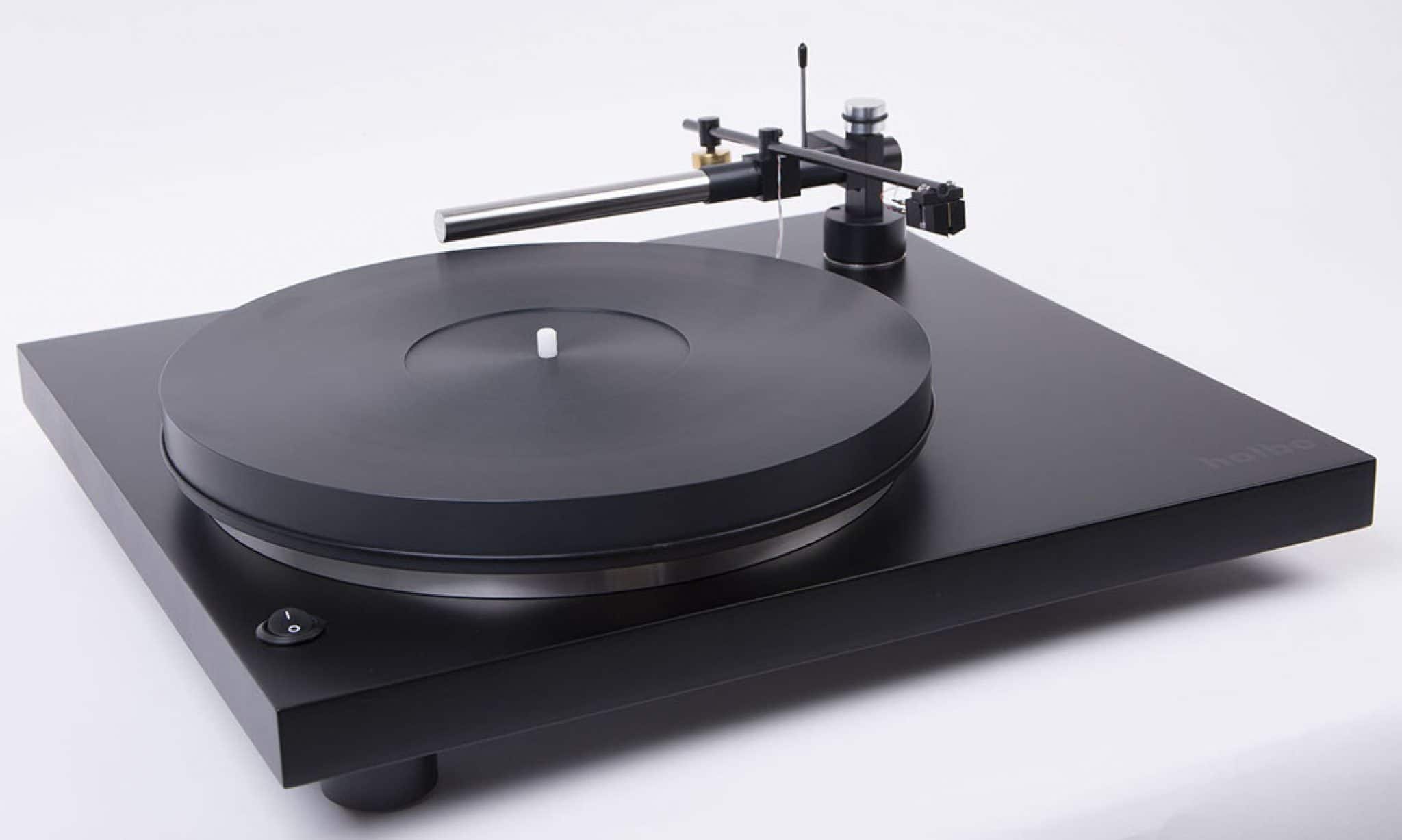
Presenting an airbearing turntable, Paul Rigby reviews this new design that arrives complete with an integral linear tracking airbearing tonearm
There’s been a raft of turntable and tonearm designs that have attempted to remove the lateral tracking error when tracing a vinyl groove. This error derives from the way the original cutting stylus does its thing.
That is, the original cutting stylus tends to move across a disc at right angles to a tangent to the groove at all times.
Home hi-fi turntables are not normally designed with a lateral tonearm system to mimic the original cutting angle. Instead, because the replay stylus traverses an arc, they are asked to play back vinyl using tonearms that are compromised in terms of design.
The result is a turntable that incorporates all kinds of angled tweaks including overhang, offset and the rest.
Hence, you’ll see tonearm headshells twisted a bit to run in the groove at an angle, there are different tonearm tube shapes, some tonearms are longer to minimise the angle error (I regularly use a 12” arm instead of a standard 9” arm, for example) and so on.
The result is a very nice sound indeed but it’s never perfect. Only a lateral play back system can possibly be that. So why isn’t every turntable out there using a lateral tracking arm? Wouldn’t that the obvious answer?
Trouble is, lateral playback arms can be complex to design and build and often incorporate a host of issues such as hard to shift vibration, stuttering and wobbling mechanisms and the like which tend to negate promised benefits. They also tend to be inordinately expensive. They sometimes suffer from reliability issues. The forces placed on the lateral arm as it moves across the vinyl can be an issue also…well, you get the idea. It’s an easy ask, but actually producing something that works and at a reasonable price is tough.
That’s one thing. Another, quite separate design question is building a turntable that uses air to actually operate a turntable. By that I mean asking a turntable to move its tonearm on a bed of air. Such systems are used in an attempt to reduce friction as the lateral arm moves across the vinyl surface.
Again, there are issues of cost, reliability and complexity here. If you want to operate a turntable on a bed of air, then where is the air going to come from? From a pump presumably but how big is that going to be? How much will it cost? How noisy will it be? If it is, does the pump need to be positioned in a separate room? Will it overheat? Is filtering required? Will alignment be maintained? Will the air hose stay in place?
Airbearing turntables can be finicky to set up and use but this model from Holbo promised to remove that hassle to allow you to quickly set up and dive straight back into your vinyl. More than that, in addition to moving the tonearm on air, the Holbo also places the platter on air too using an air bearing. The platter can only be moved when the air is being pumped underneath the platter. Otherwise, it remains in place and immovable.
Spanning 430 x 400 x 150mm and weighing 12kg, the MDF plinth supports the aluminium platter.
Around the rear are connections for a supplied air pump (weighing 1.8kg and spanning 225 x 147 x 120mm), power supply and phono cable, a dual-speed toggle switch and fine-adjustment speed pots.
The DC motor runs a pulley supporting a belt. Basic engineering is good, the turntable is solid and the turntable, in operation, is quiet at the normal listening position. The supplied air pump is also very quiet.
The arm itself can be adjusted for azimuth, levelling and VTA, features a steel tube and aluminium base and carbon tube construction plus silver/copper Litz wiring. A installation gauge is supplied to aid setup.
Attaching the air tube to the turntable and pump is easy and achieved by a screw collar while adding the power supply is as you might expect. Everything else arrived installed and, besides the addition of a cartridge, belt and checking tonearm positioning (something you would do on any other turntable), there was nothing more to be done in terms of set up.
MANUAL
Before I look at the turntable, a quick word about the manual. That word is ‘Urrggh’. I see this a lot. One-man-band company, concentrates on the engineering but loses sight of the importance of the support materials.
The manual is a Curate’s Egg, good in places. There are some nice annotated images here but no where near enough of them. The manual, a few sheets of A4 paper stapled in the corner, needs a lot more hand holding and explanatory text. There’s also too many assumptions here on behalf of the company. As if the company has said to itself, “The public knows this, so let’s skip through this bit with a bullet-pointed list.”
Well, no. Never assume. Especially in hi-fi.
One example was my query to the company about the fact that I couldn’t move the platter. Was this down to the air bearing technology or was it because there was a transport lock to protect the bearing and, if there was such a thing, where was it? I received a panic-stricken reply entreating my not to move the platter because of the air bearing thing yet there was no warning of the same anywhere in the manual. Yet it was the first thing I thought about after unboxing. There’s also lots of bits and bobs in this box that can cause confusion to a beginner.
Manual? Could do better.
CARRY THAT WEIGHT
Related to the above is the lack of any installation advice. For example, the tracking weight at the rear of the arm. This is a separate piece that screws onto the straight arm tube. As you can see by my illustrations, this weight can be secured at any old angle. Does it matter what angle you set it at? The company seems to secure it weight downwards but I’d heard tell of some people fixing free-form weights like this at alternative angles to change sound quality. I wanted the company to talk about this and to discuss options.
I also wanted more background on the arm technology.
FEET
The included feet are made from acetal POM-C and can be used for levelling. Good. Trouble is, when placing the plinth on your shelf, the three support feet features a protruding spike in the centre which can damage your shelf surface. The manual offers a one line warning about this buried in one of those bullet point lists I mentioned above.
You need to place protective supports/discs under each foot. I would have liked to have seen freebie examples of the same from the company. Something cheap and cheerful. Just to show the user that the company is thinking of them. As it is, I recommend buying yourself three support feet with little holes in the top to take the spikes before you unbox this turntable.
SPEED
During the installation I noticed that the speed was off. At 33.33rpm, it was off by 1pm or so. On the rear of the plinth are two pots to easily adjust the speed which is great and useful but the pots are adjusted by micro screws which need a micro screwdriver. Not everyone has these either. I did but I’m a reviewer. The company needs to include one in the box. Again, it doesn’t have to be fancy. Something cheap and cheerful.
There doesn’t appear to be any warning that there’s no interconnects included with the turntable, either. I can’t see anything to that fact on the website so be warned, you will need to invest in a spare pair of RCA cables plus a ground wire.
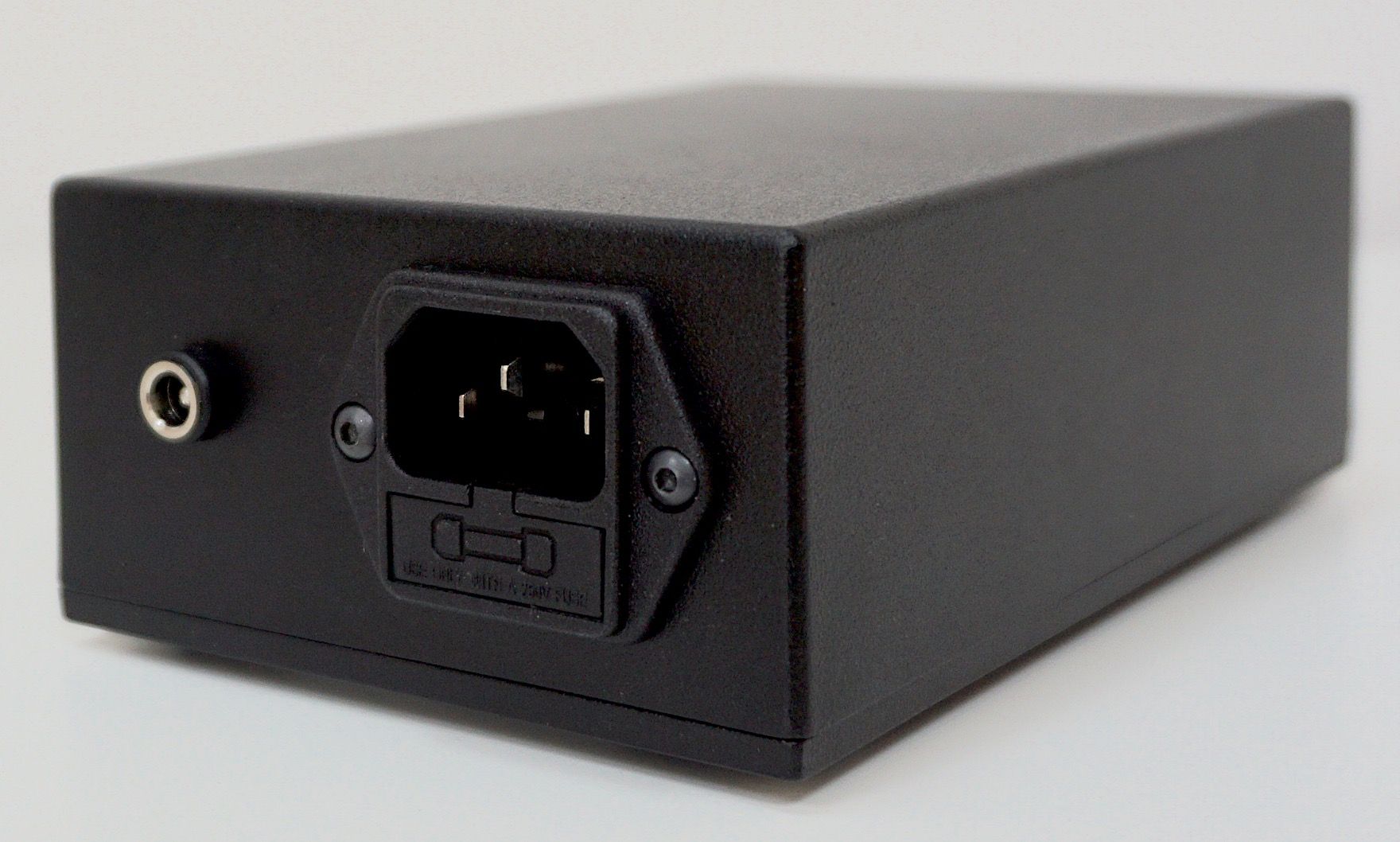
In operation, when you lower the arm onto the record do so slowly. There’s no damping integrated within the arm lift so it’s possible to plonk the stylus down onto he groove with a relatively hefty thud. Take care here. Actually, I prefer to ignore the arm lift and use my fingers. I found the latter to be a more precise and gentle method.
SOUND QUALITY
I began with Peggy Lee’s Raindrops album that track Raindrops Keep Fallin’ on my Head. Here, Lee was backed by a full orchestra.
My first impression was how well the Holbo tackled the upper frequencies. Lee’s vocal was nicely presented. Her light delivery, somewhat tremulous at times and wispy, was easily tracked by the Holbo which also illustrated her slight vibrato with admirable insight.
The flute on the left channel can be too elusive for some turntables but there was plenty of information on offer from the Holbo. From the humanistic flow of air through the instrument – full of micro mistakes and texture – to the rush of air during emphasis, the Holbo was able to presented delicate information with aplomb. The treble was similarly presented, the stroking of a bank of bells on the right channel sounded positively delicious.
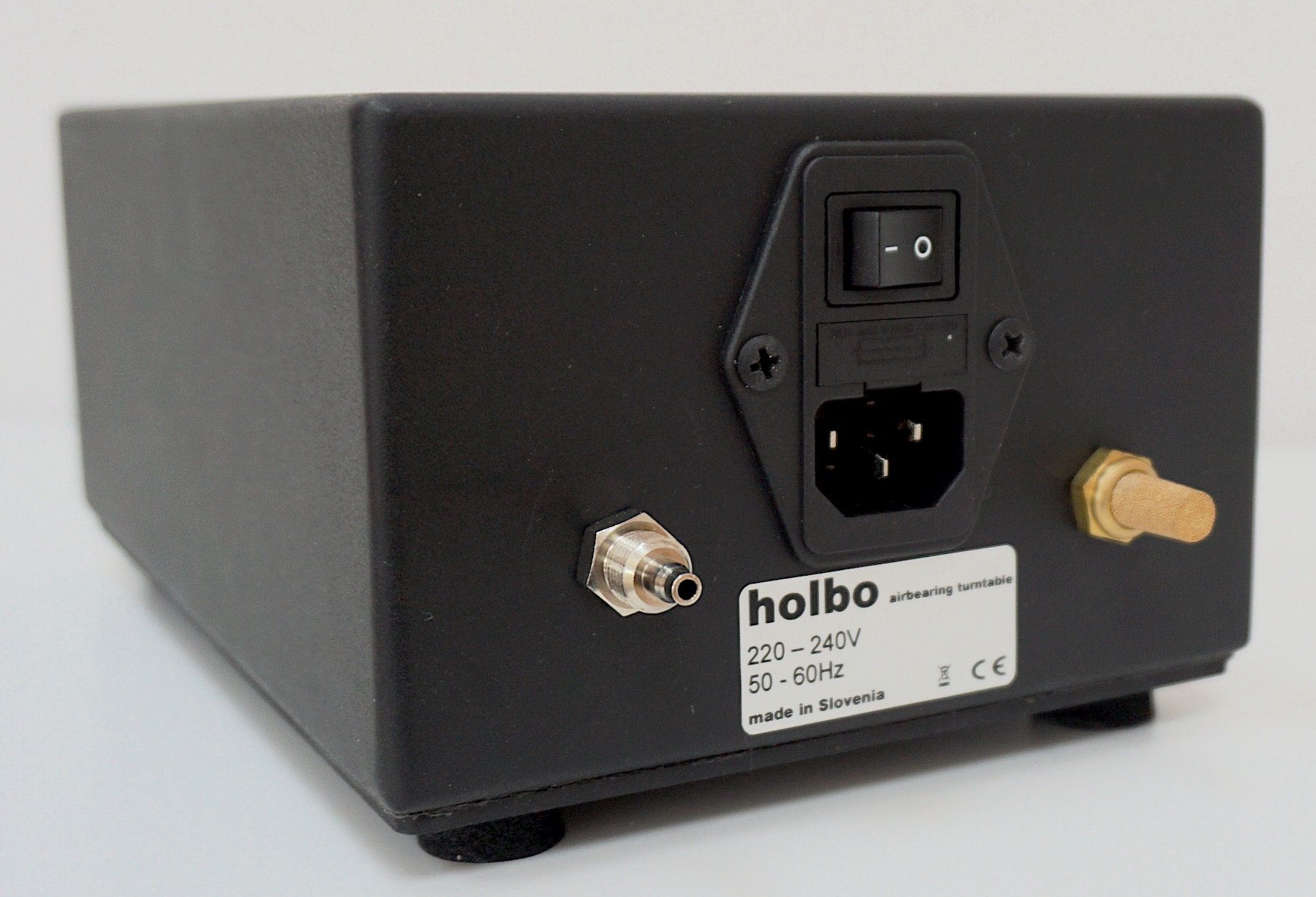
The soundstage was also large enough to contain this information. The Holbo pushed the boundaries left and right and offered a host of space for instruments to roam. Hence, detail swirled around the backing orchestra: from the tonality of the brass section, to the twangy electric guitar that sat underneath the vocal.
Bass too was present. Not too weighty, nicely integrated within the mix and honed enough to provide a foundation to push the track forwards.
Remember I mused about the tracking weight at the rear of the arm and how it might affect performance? I decided to test just that and, would you believe, heard sonic differences depending on which position the weight was fixed.
The company’s default appears to be installing the weight, hanging down in the six o’clock position. So I used that position as a reference to work from. I first changed the weight’s position to the twelve o’clock position, looking front to back at the turntable, and heard a difference.
The sound quality change was not massive. It was subtle but it was there.
The effect was to add a slight hardness to the upper mids and treble. A light was shining upon these areas that, accentuated precision but possible a little too much.
Turning the weight to the three o’clock position removed that effect but I found the music a bit on the dry side. A little sterile and lacking in life.
It was only when I moved the weight to the nine o’clock position, in the same direction that the working arm was travelling, that I hit pay dirt. The upper mid/treble accentuation was removed and there was more air and space in the soundstage plus new reverb attached to the vocal delivery.
Hence, I would recommend moving the arm’s tracking weight to the direction of arm travel, at that nine o’clock position.
I then wondered if I could enhance the imagery at all so drafted in a HRS ADL stabiliser which sat over the centre spindle. I thought that the ADL added depth to the soundstage and added the ability for the Holbo to separate that soundstage into layers. Notably, on the left channel, the orchestral strings and flute all too easily merged into one sound. Adding the ADL helped to separate the two into distinct sections. For those who know HRS, I wouldn’t go for the ADH, that’s way too heavy for the air bearing nature of the platter.
I then played a slice of The Cure and the LP, Pornography and was impressed with the Holbo’s balanced neutrality. Again, the space and air around the soundstage enhanced the size of the presentation while the sheer amount of information on offer was impressive.
Bass impact, the force and power behind the methodical percussion within he track Figurehead was not gut moving but did offer great character, remaining satisfying in terms of its impact upon the track.
CONCLUSION
It’s nice to use an air-bearing turntable that not only works and works well but doesn’t require an engineering degree to set up and yet offers a host of tweakable set-up features if needed.
The Holbo’s sense of balance and neutrality means that the music speaks for itself. There’s no colour here, either. More than that, the Holbo sounds rather lovely with its upper frequency finesse and lower frequency character.
The Holbo picks up information and delivers it to you ‘as is’. What more can you ask of a turntable?
HOLBO AIRBEARING TURNTABLE SYSTEM Price: £6,400 Tel: +386 31 578 518 Website: www.holbo.si
GOOD: midrange insight, treble finesse, bass focus, spacious soundstage, set-up
BAD: manual, missing accessories
RATING: 8
[Don’t forget to check out my new Patreon Page at www.patreon.com/audiophileman, for exclusive postings, giveaways and more!]
REFERENCE
Origin Live Sovereign turntable
Origin Live Enterprise 12″ arm
Van Den Hul Crimson XGW Stradivarius Cartridge
Icon PS3 phono amplifier
Aesthetix Calypso pre-amp
Icon Audio MB845 Mk.II monoblock amplifiers
Quad ESL-57 speakers with One Thing upgrade
Blue Horizon Professional Rack System
Harmonic Resolution Systems Noise Reduction Components
Gutwire Consummate Grounding Cable
All vinyl was cleaned using an Audio Desk’s Ultrasonic Pro Vinyl Cleaner

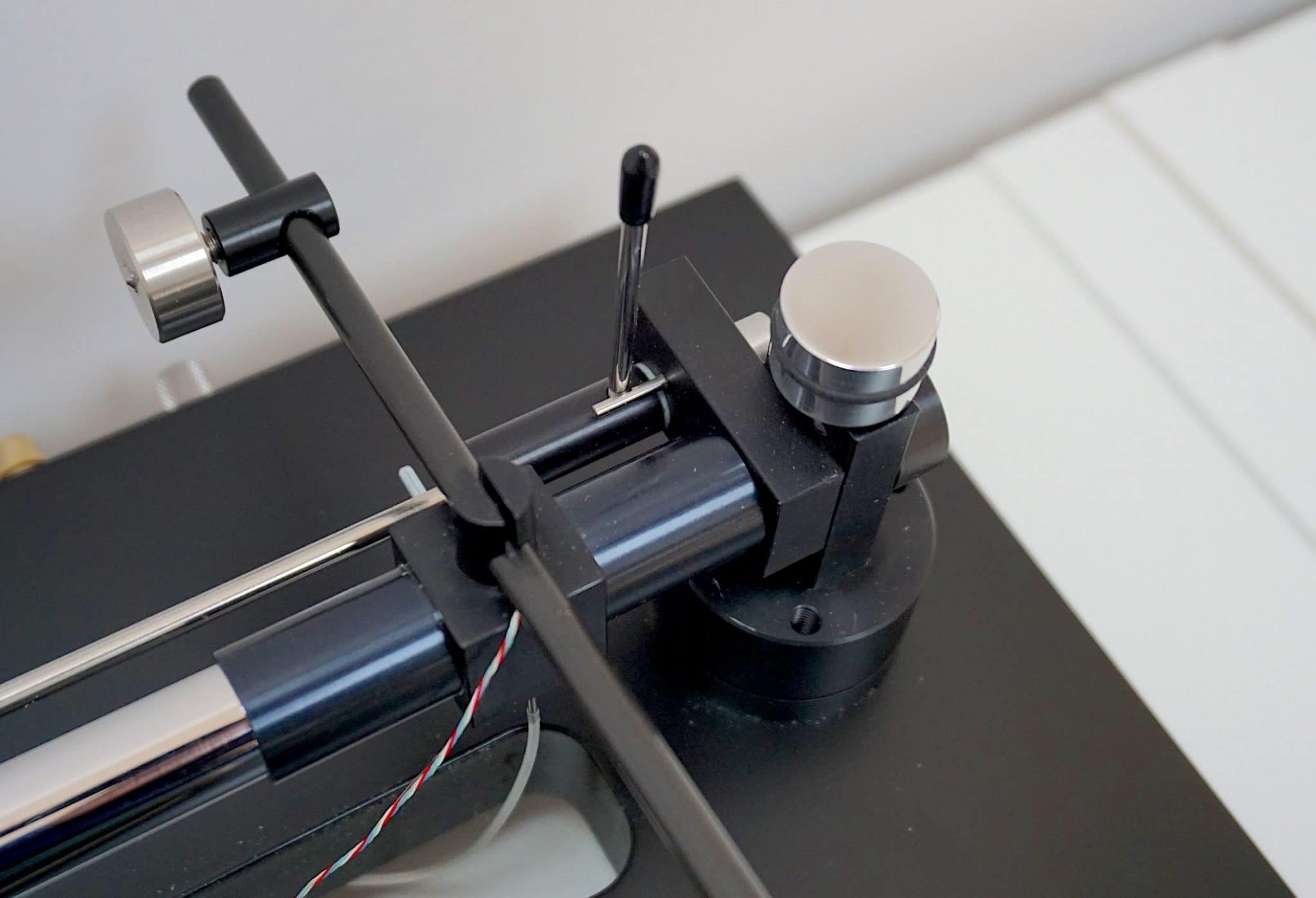
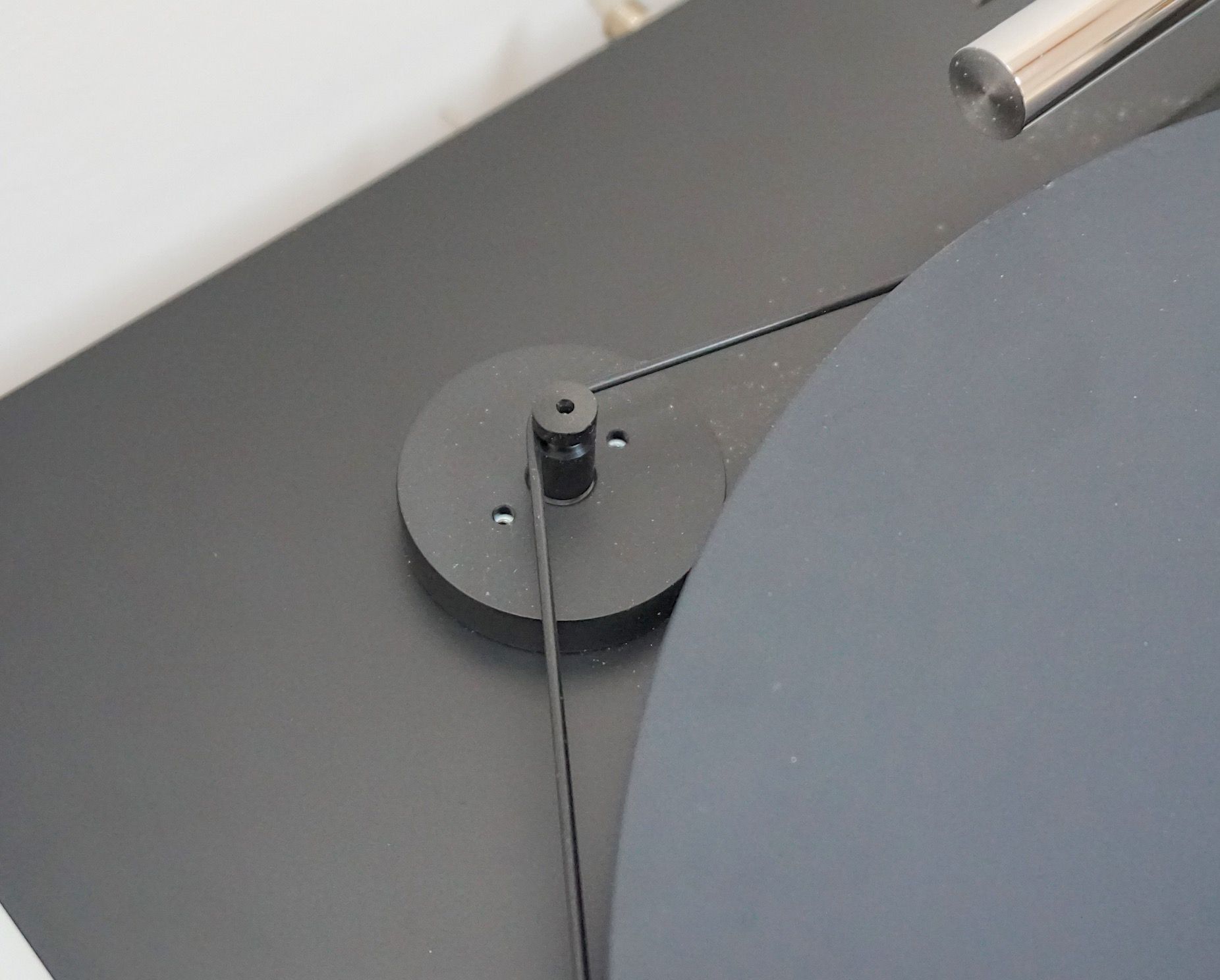
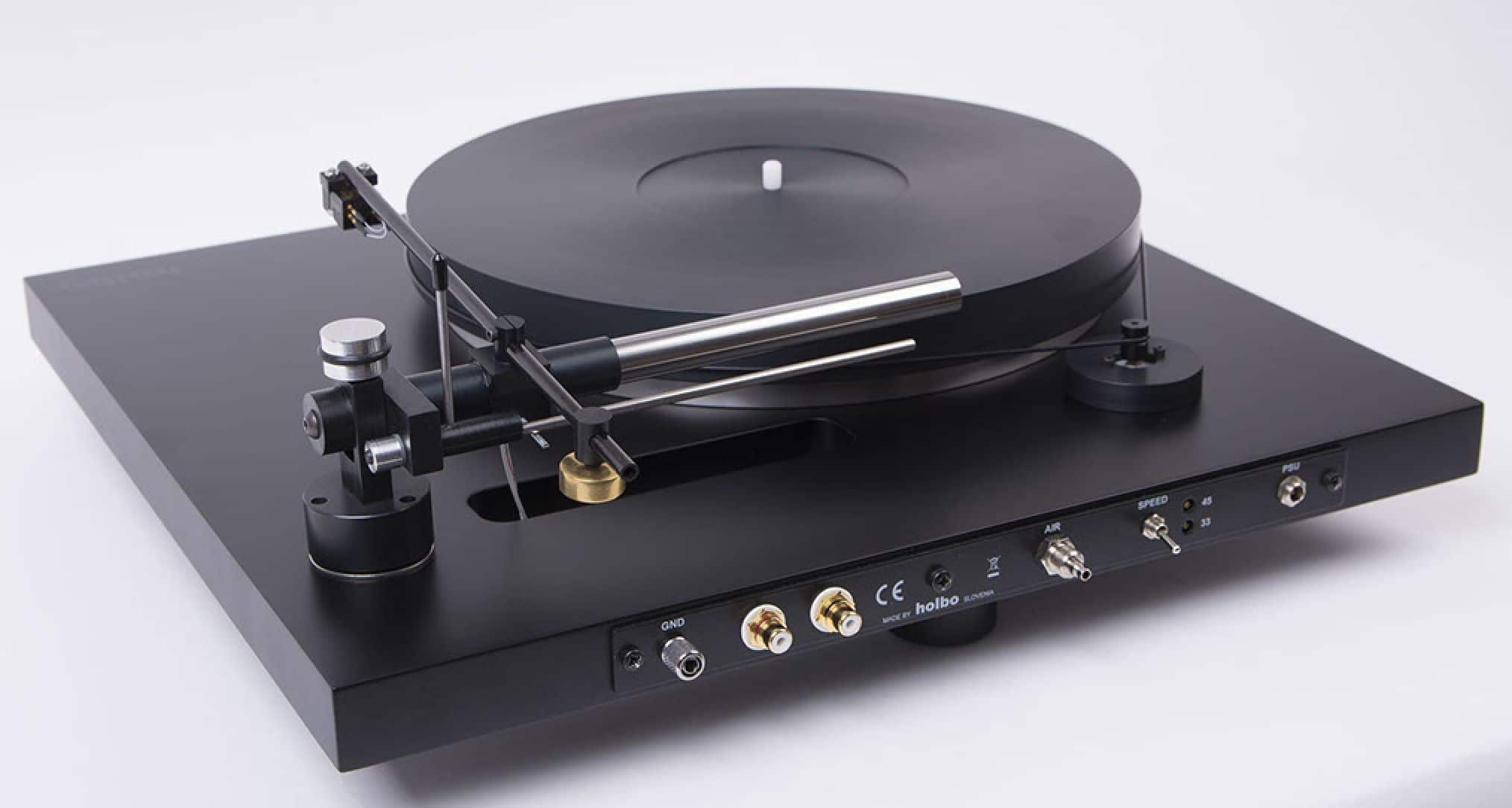
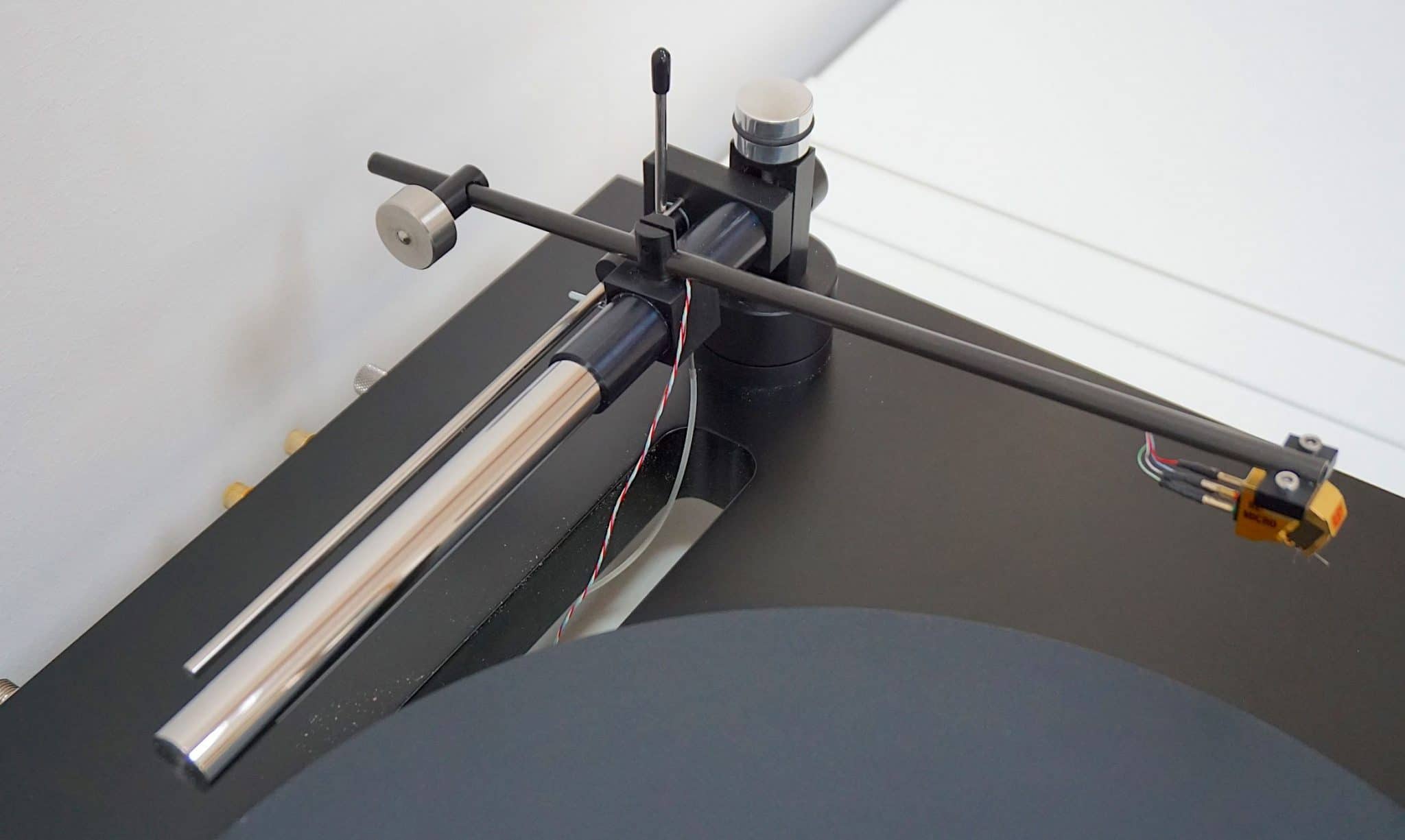
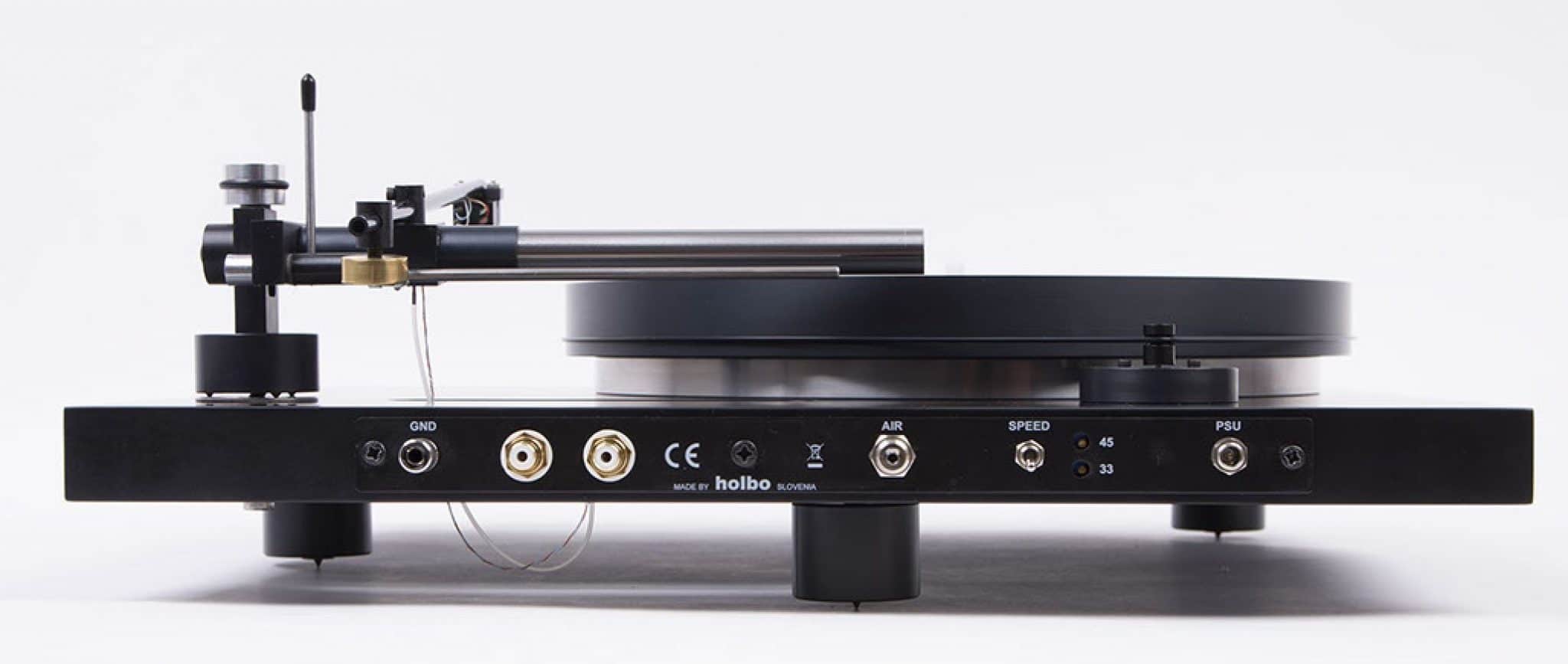
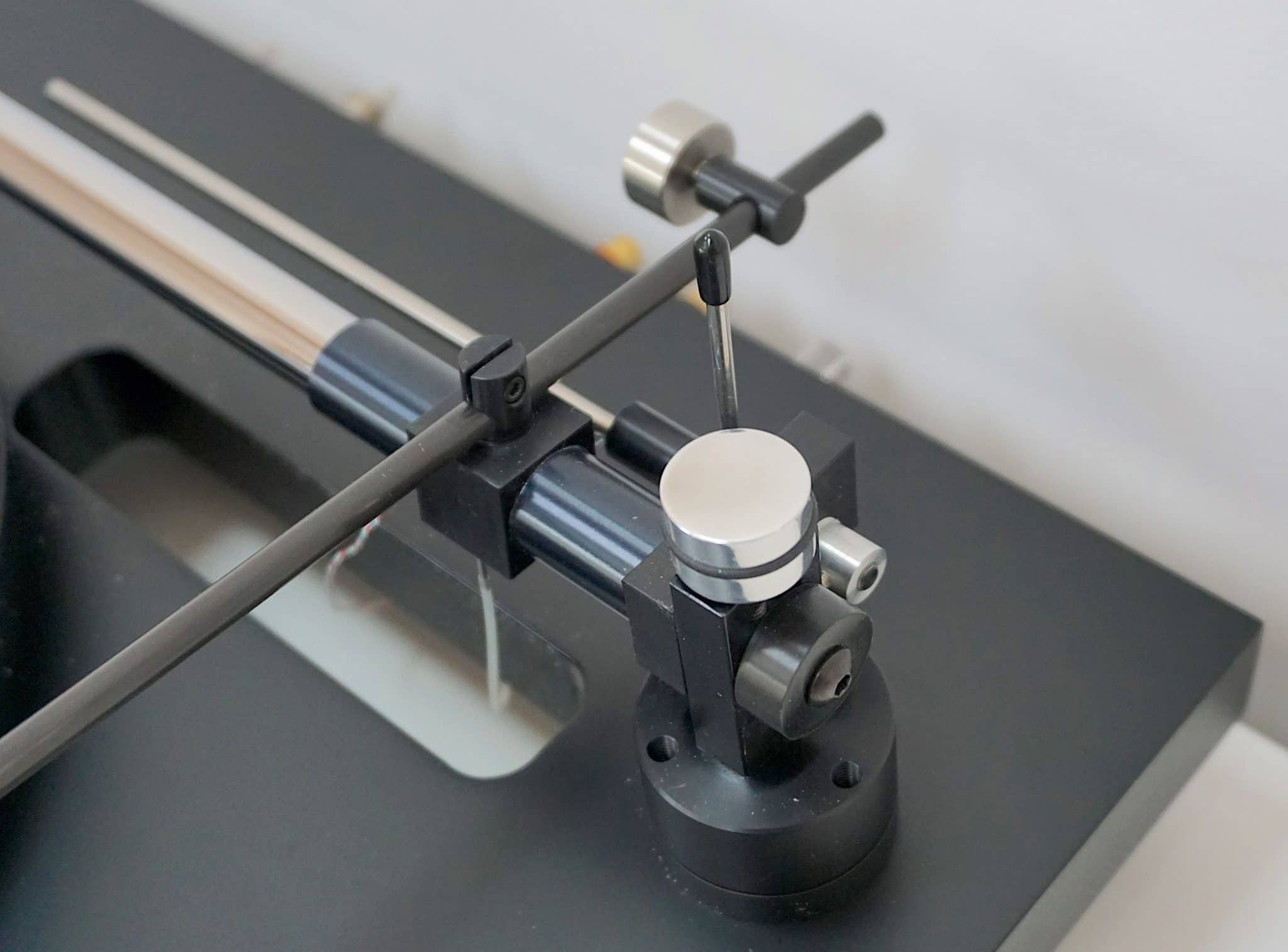
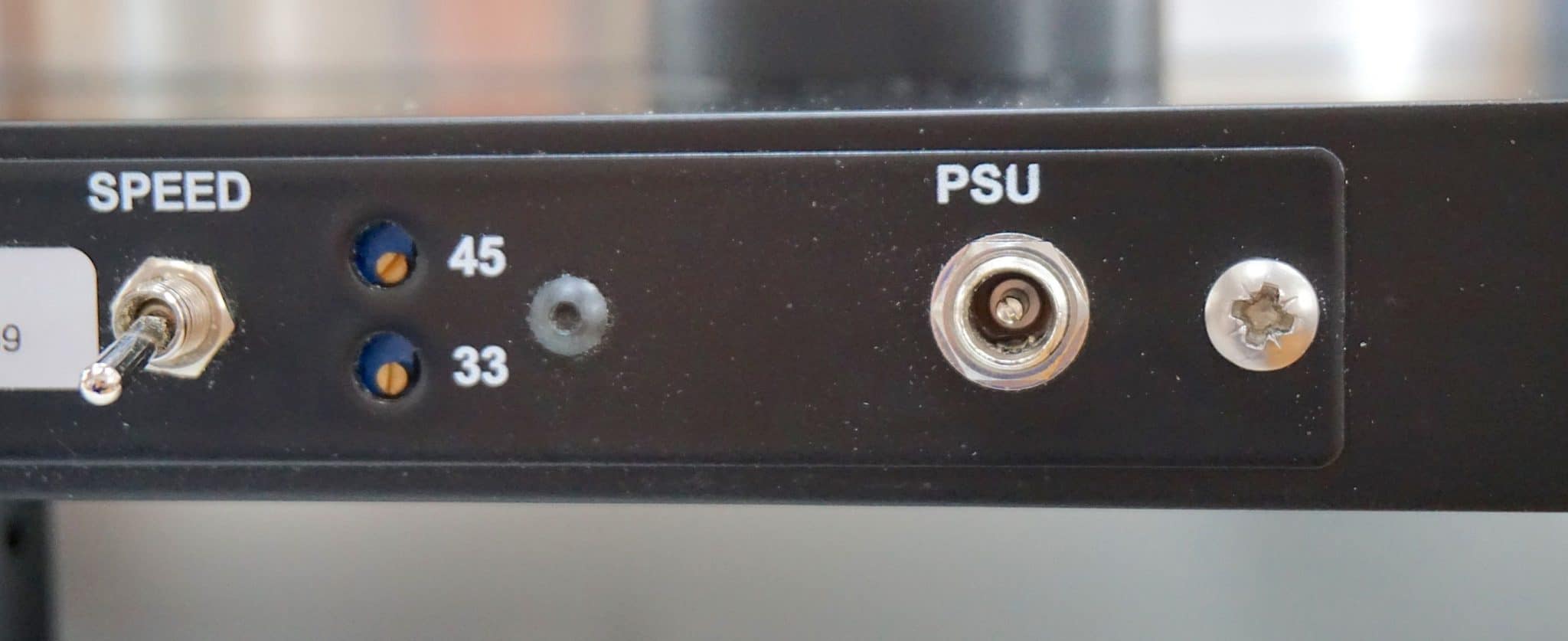
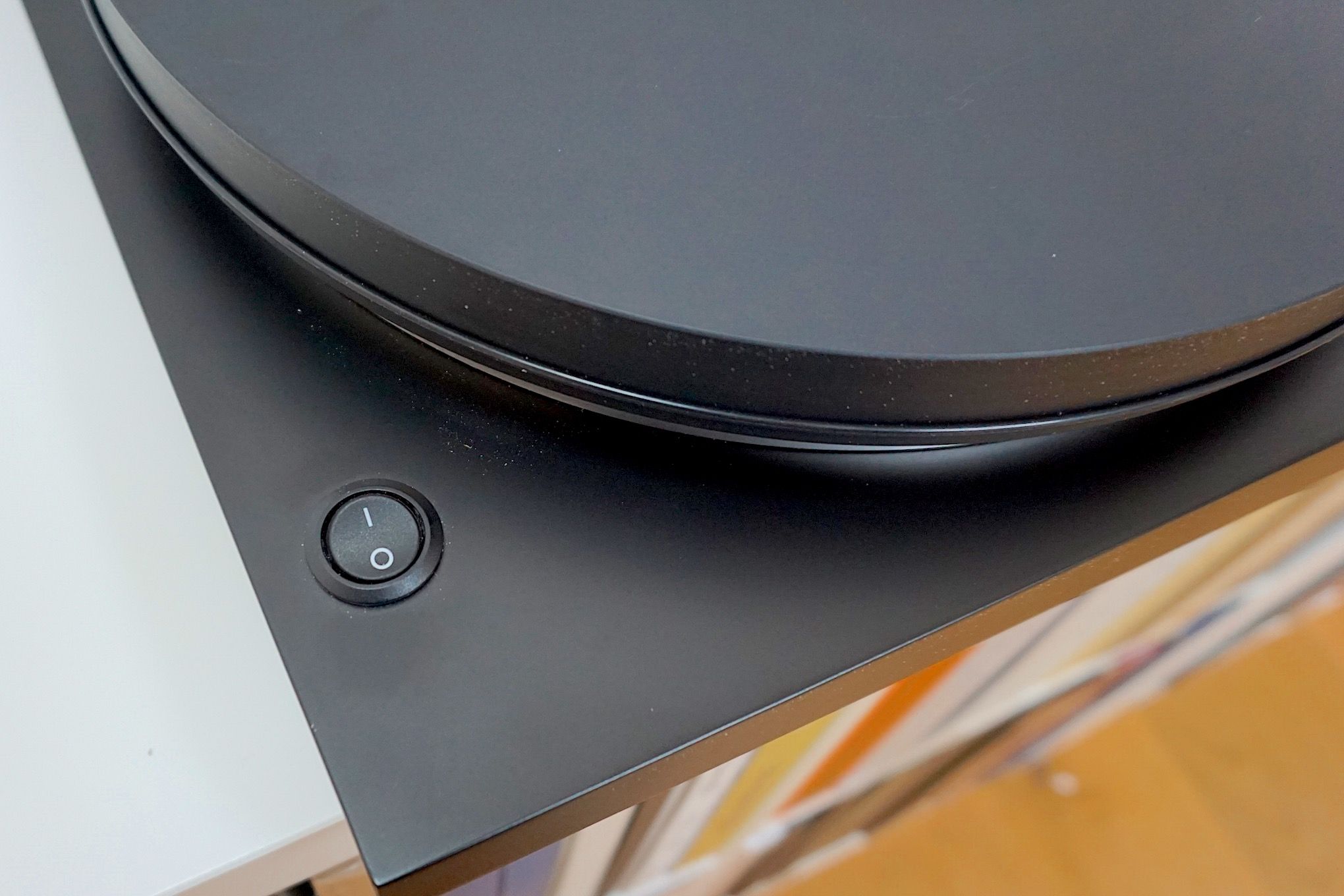
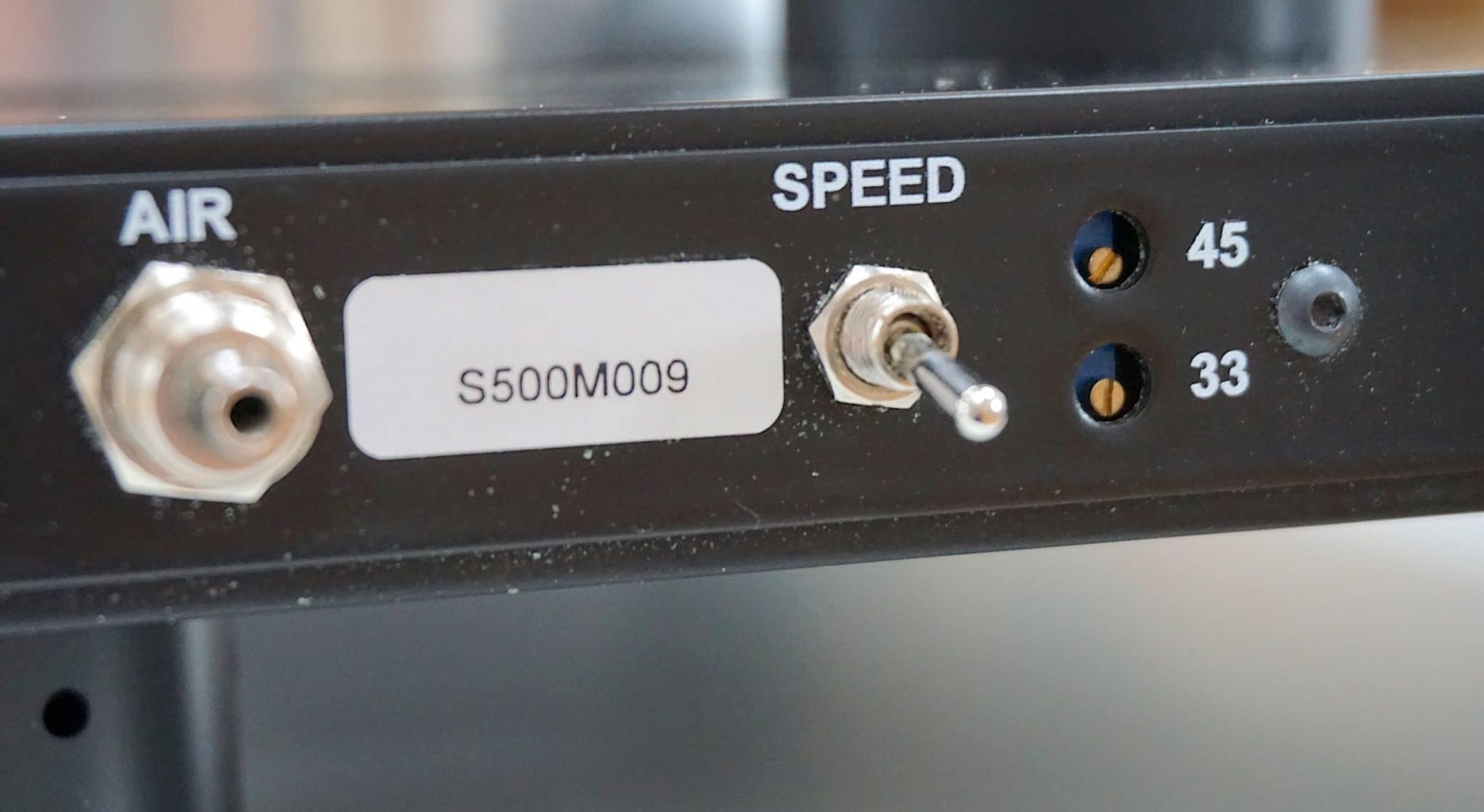
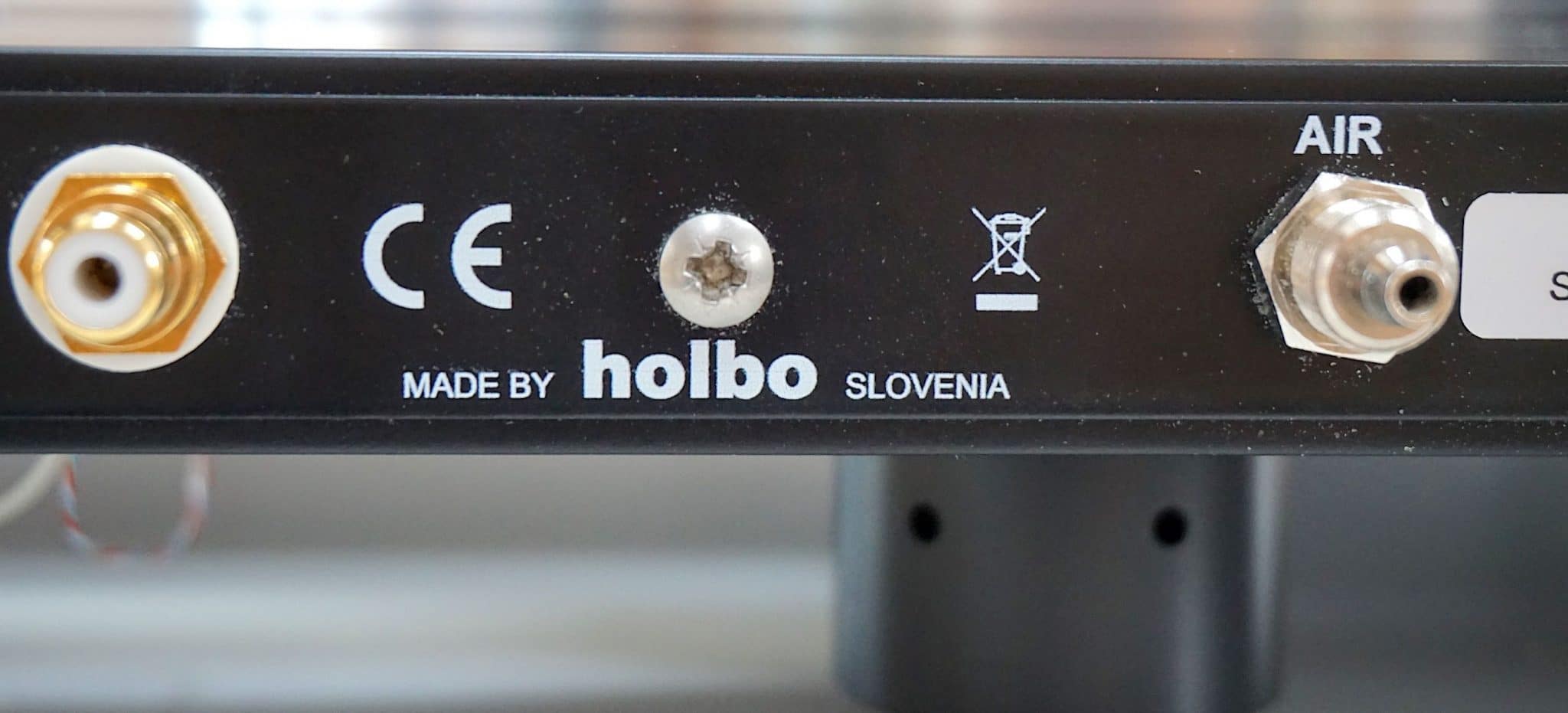
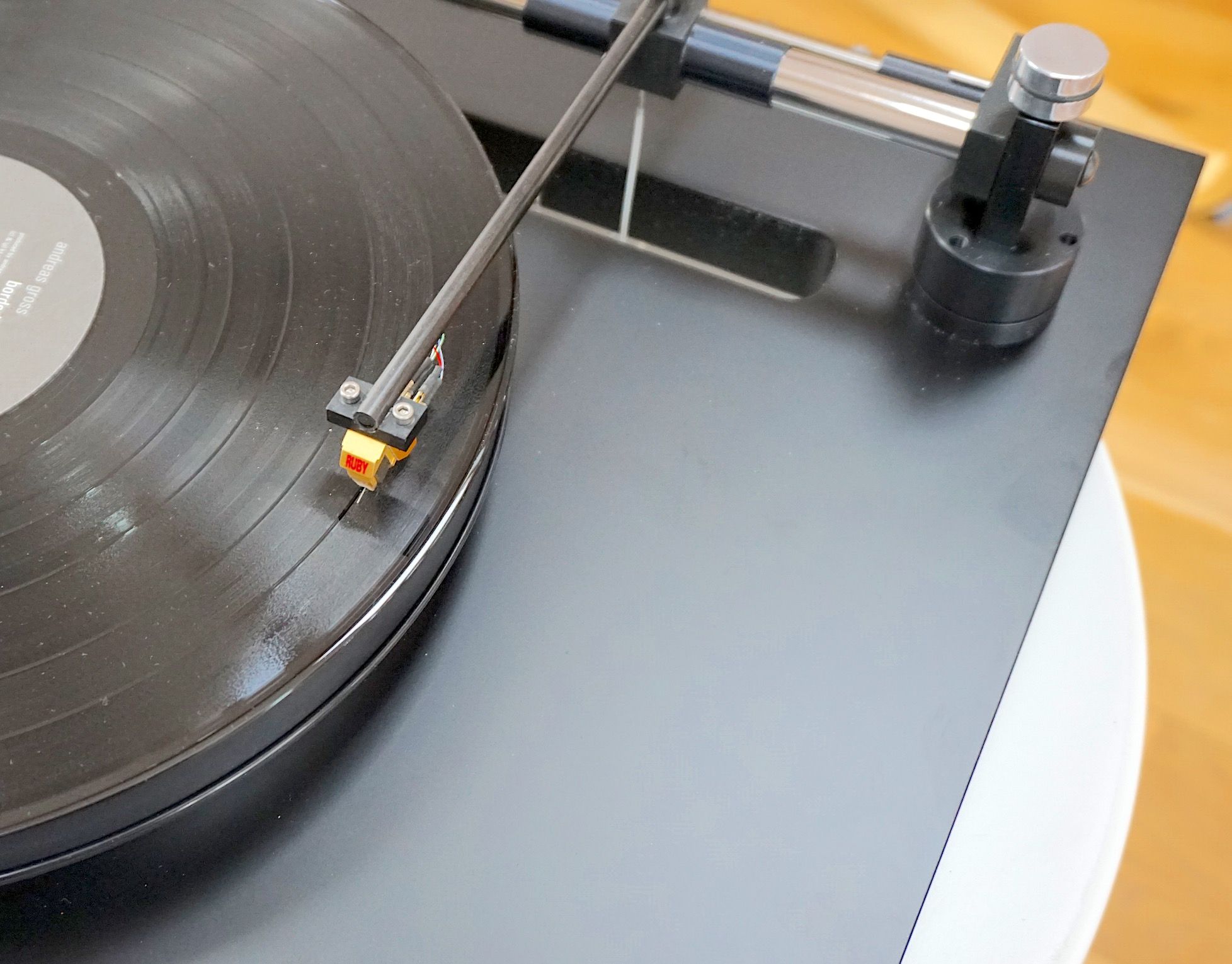
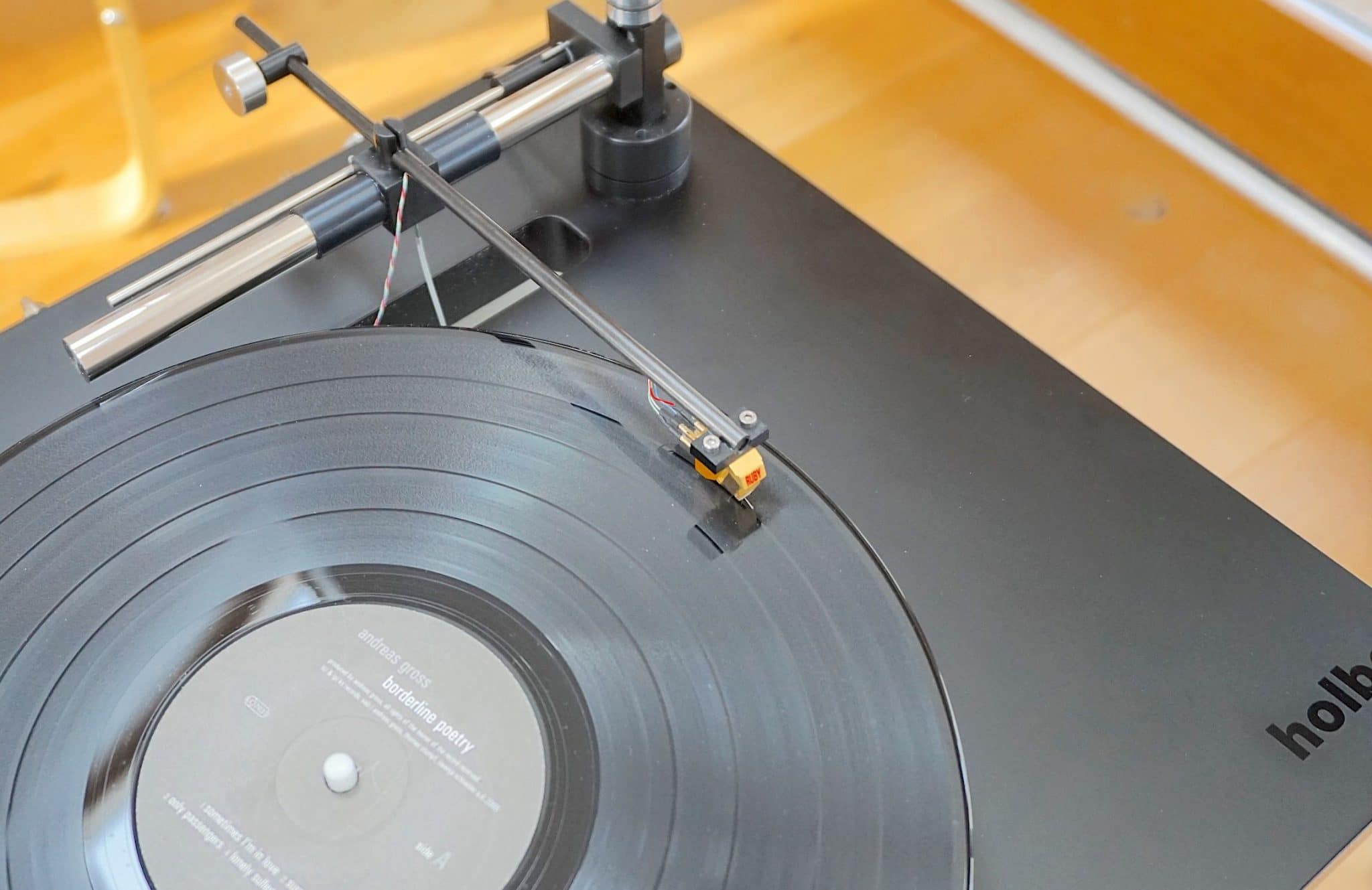
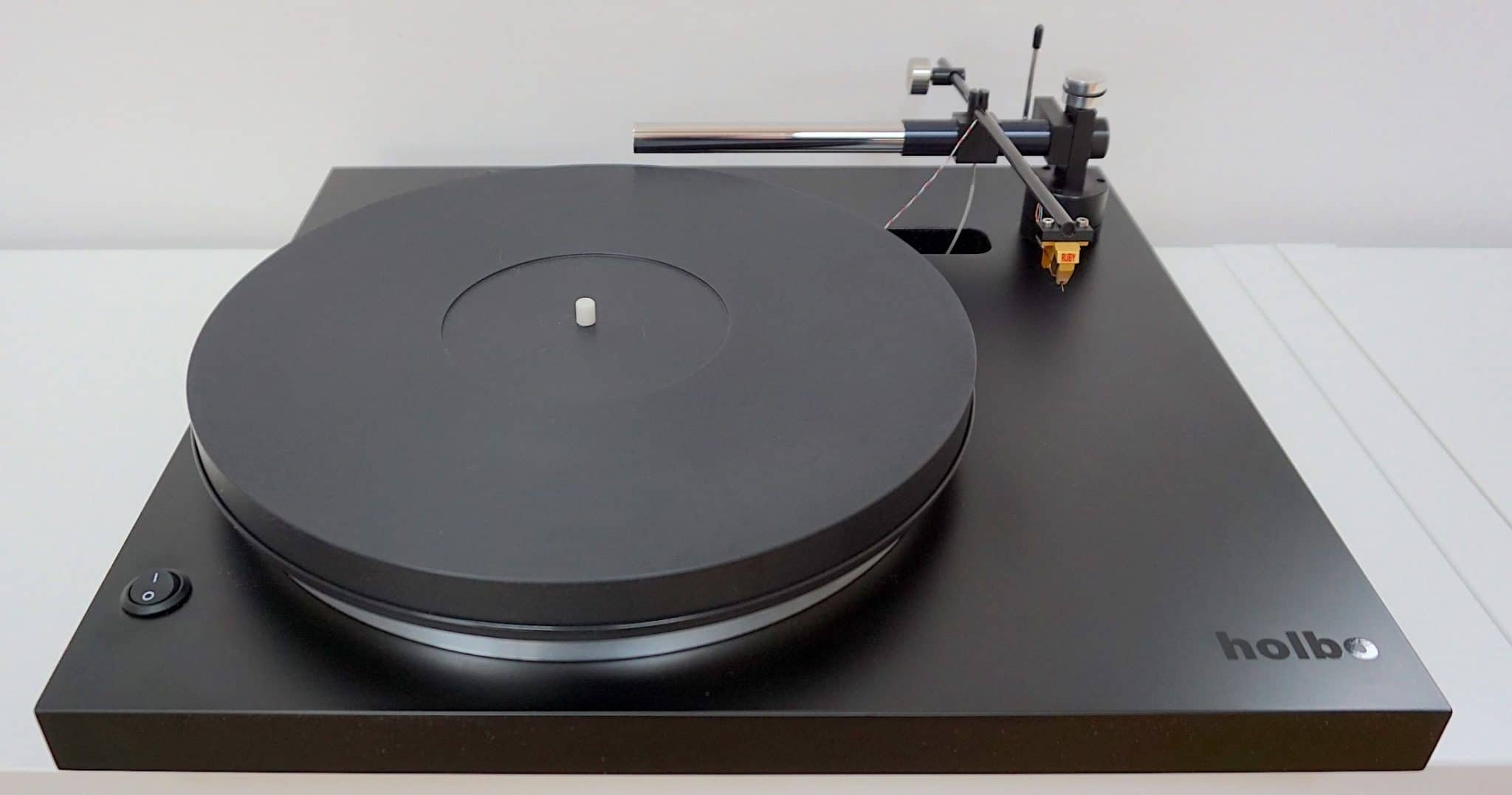
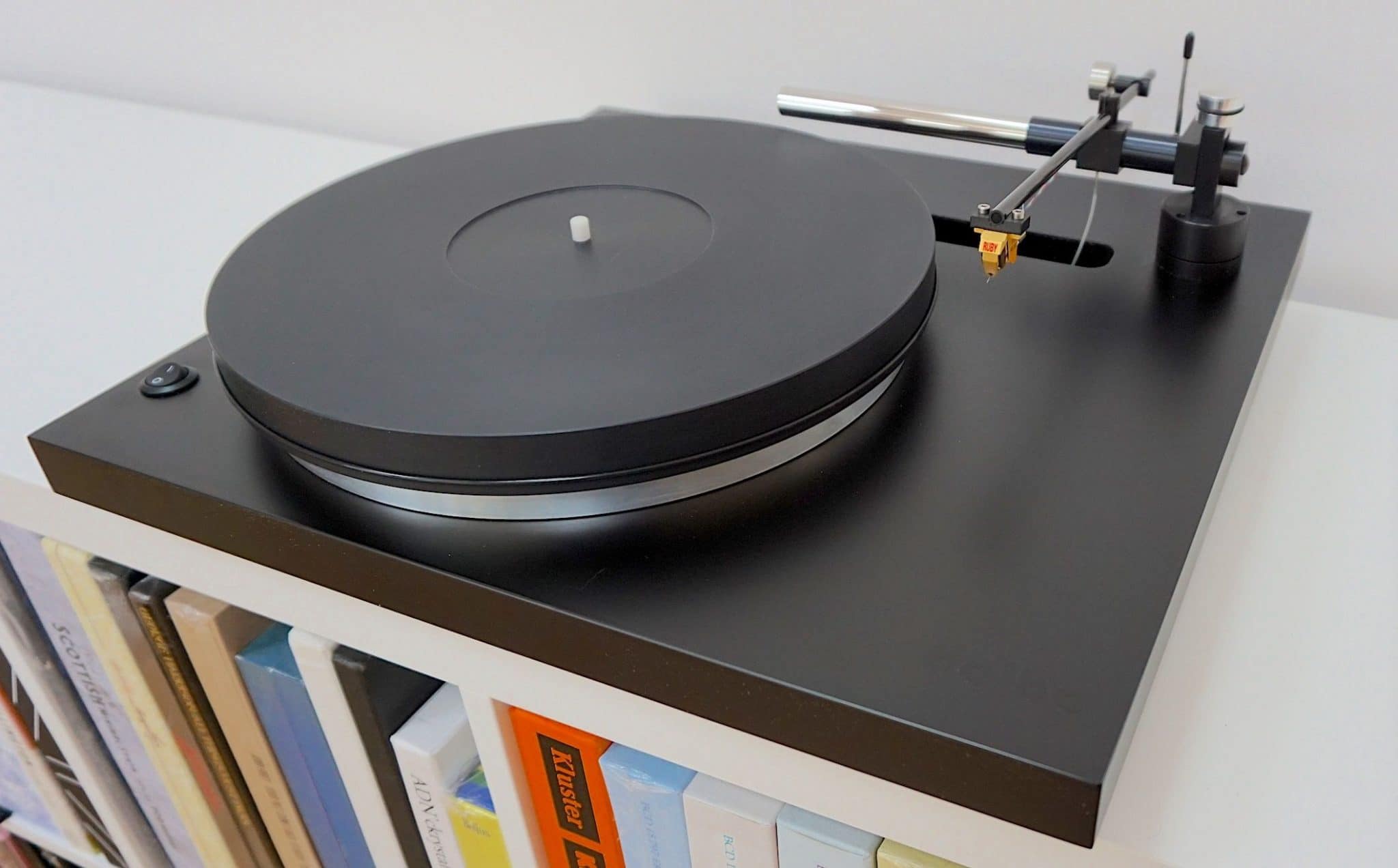
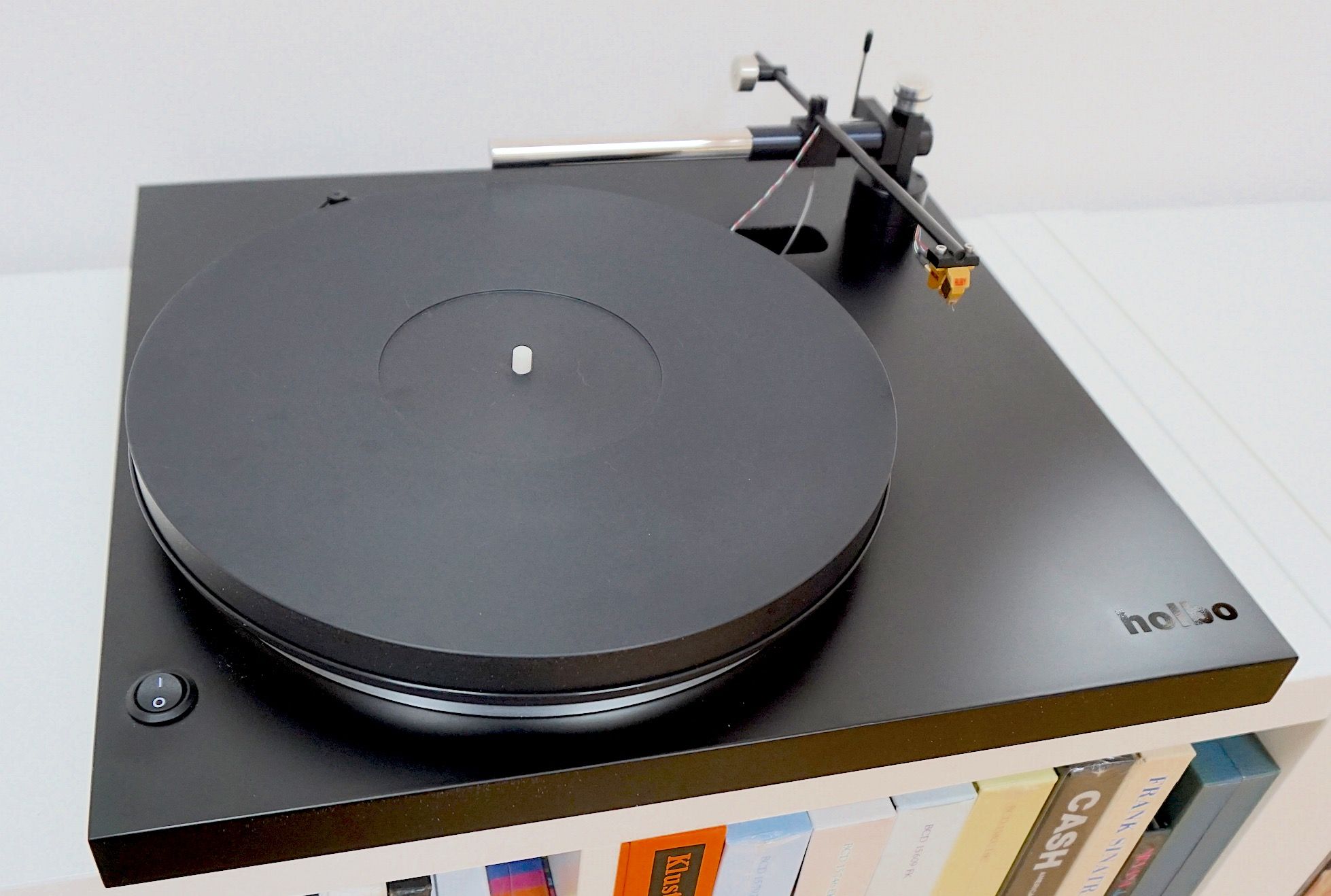


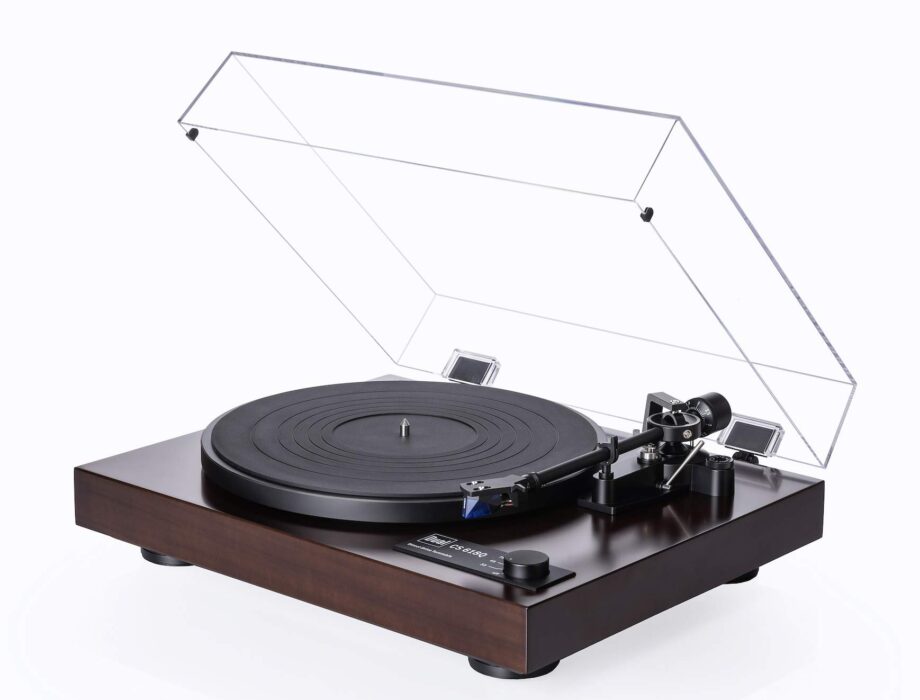
Hi Paul
I’m wondering about the potential advantage of the tangential arm design when it comes to reducing or removing inner groove distortion. Did you notice any benefits in this area?
I’m also wondering if you have heard the Bergmann Magne and if so how they compare.
Cheers!
Jon
To be honest – I’m not sure, Jon. Distortion was lower, yes but that effect might have been the result of other factors and other types of distortion being affected. The bottom line certainly was excellent sound, though 🙂 I haven’t heard that other turntable, I’m afraid though I have heard good things about it.
Thank you Paul for the quick reply. I do like the look of this turntable.
Cheers!
Hi Paul,
A very interesting article, thank you. I have long lamented the demise of linear tracking turntables, but luckily enough I have a Technics SL-DL1, with a custom-made Van Den Hul MM P-mount cartridge attached – basically the body of the original cartridge & stylus, fitted with VDH stylus, VDH magnets, VDH coils, etcetera – sending me back a cartridge which blew the three-dimensional stereo picture wide open, with vastly increased depth and detail. When I upgraded from a Yamaha A595a amplifier to a Denon AVR-3083, the Denon showed even more of what the cartridge was producing. Obviously these are surround amps, but I only use pure stereo for music sources, and the Denon has a pure direct option too. It drives 10″ dual concentric Tannoy loudspeakers, through VDH linear crystal silver cables. The sound I get is truly wonderful, but I do not expect my system to be in the same league as yours, nor could I afford for it be!
That brings me to my comments on the Holbo turntable. You mentioned affordability yourself, but the price seems exceedingly expensive, especially for what it offers, and out of the reach of all but the wealthiest hi-fi enthusiasts. It might be easy to set up, and it might have a good sound, but I would wager that most of the high quality of that sound comes from the VDH cartridge you used, which is several generations more advanced than mine, and MC not MM.
The most significant things the turntable needs to provide are low wow & flutter, low rumble, and a linear tracking system, which provides the tracking benefits for the sound of course, but also reduces record wear, and makes any such wear as there is, equal. Does it really need to provide anything else, apart from ease of use?
Air bearings are indeed wonderful bearings, but they are a faff, with the need for air-pumps, and are they really worth a ¬£6,400 price tag? This turntable isn’t even direct drive! Honestly, if they had made it direct drive, used normal high-quality bearings, and thereby knocked a zero off the price, it would sell in the thousands. At least, it would if they put the controls on the front, and included a strobe.
Don’t get me wrong, I’m pleased there is someone out there reviving linear tracking technology, which we should never have moved away from, but I hope this is just Holbo’s very first highest-end-of-the-market effort, and that they soon start producing a more budget conscious model, preferably with some ease of use thought about, and a better lowering device, as you alluded to.
My Father – a huge VDH fan, with their amplifiers, and their top cartridge, has a totally different solution again – a customised turntable system, based on a much modified Garrard 401, with an equally customised articulated linear tracking pick up arm. I can’t help wondering if a return to that concept might be an option too, as you can still buy turntables and arms separately. What do you think?
I hope I’m not being contentious and that my comments are more a case of food for thought, only I do worry, as I’ve already had to have my SL-DL1 repaired once, and I’m hoping there will eventually be a credible and relatively affordable linear tracking replacement on sale, before it finally gives up the ghost – as it’s already about 40 years old.
All the best,
Marcus.
Hi Marcus – well all my comments about this turntable are in the review but, for what it does and how it does it, yes I’d say it offers value. In relative terms, of course 🙂
As a by the by, I was musing about grabbing a second-hand linear Technics and comparing that to similarly priced new budget decks to see how it faired. Not too sure if that would be something people would like to read though. Any thoughts?
Hi Paul,
Thanks for the rapid reply. I see what you mean about value üòÄ. It’s not affordable for most people though, really. Given that Thorens seem to have made the running with one of the better automatic decks out there (I was reading some of your other articles), I’m hoping it wouldn’t be too much of a leap for them to go the whole hog and make a linear tracker too.
I think it would be a great idea if you picked up a second hand Technics linear tracker, and I feel sure there would be interest, because there always seems to be a few changing hands on eBay. I have actually got more than one myself. The main thing is the cartridge though. Apart from my custom VDH cartridge, I rate Audio Technica for P-Mounts, so long as they have an elliptical stylus – that’s what I’ve got on my other SL-DL1. I’m told that there is a better Technics model out there than mine though – the SL7 – but of course you may not be lucky enough to find one.
By the way, do you think there is any mileage in resurrecting the idea of articulated linear tracking pick-up arms? My Dad’s is a Worden, which he’s significantly modified himself. It’s made of wood, and he’s cut panels out of the sides and top, and changed the counterweight – machining his own from brass – all to reduce the weight. He’s fitted modern bearings too, and changed the internal wiring to VDH. He tracks his cartridge at just over 1g I think. Anyway, I digress, as usual! üòÄ
All the best,
Marcus.
Paul, would you please send me an email. I sent you a private message on Facebook the other day but did not receive a reply.
Was this about Holbo, Brian? Why not ask here? If not, please try again on Messenger, there may have been a glitch.